Understanding
the site
The Church Family site is the location of the first Shaker settlement in the United States
The community eventually established four enclaves or villages. The Shakers called them “Families”, reflecting the communal arrangements for living and working.
The Church Family was the first established at Watervliet. The North Family followed by 1790, the South Family in 1800, and the West Family in 1810. The Church Family was where the most experienced and devout Shakers lived. The South Family functioned as a novitiate or “gathering order” for children and new converts.
These four geographically and economically distinct Families comprised the Watervliet Shaker community. Eventually the total of the community’s owned and leased lands would reach about 4,000 acres.
At the peak of the Shaker religion in the mid-19th century, there were approximately 350 Shakers living at Watervliet. Across the nation, 4,000 to 6,000 Shakers lived among the 20 Shaker communities in 8 states.
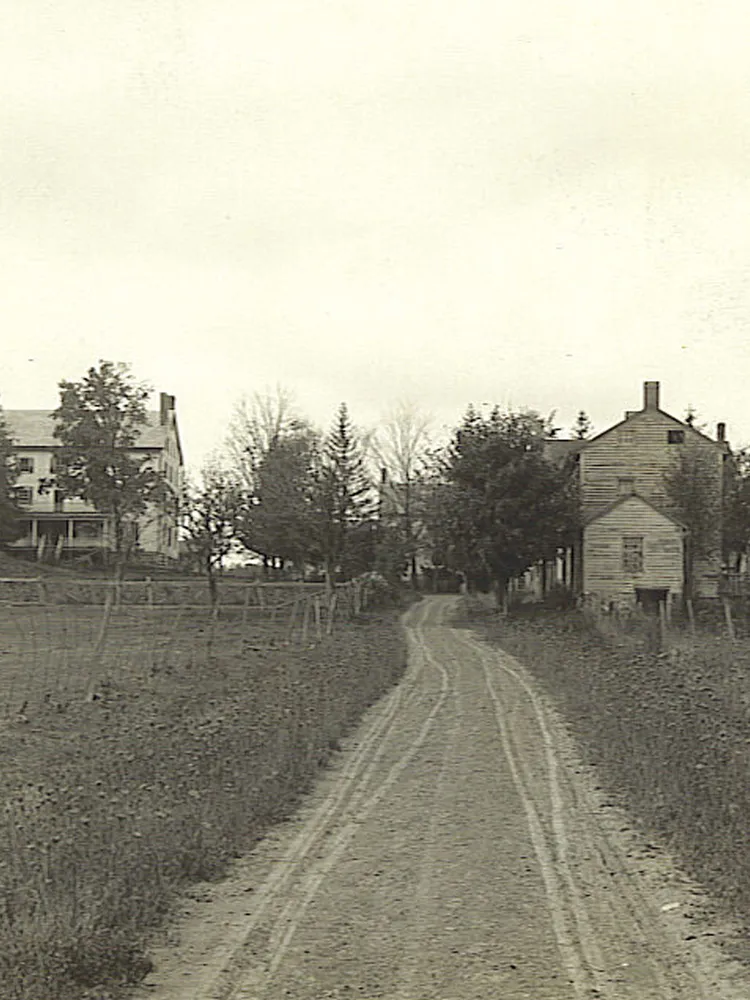
As the Shaker community declined, the Family sites closed and sold to private owners. The one exception was the Church Family.
Albany County bought this site in 1925 for the construction of the Ann Lee Home. The South Family was the last Family to close in 1938.
Today, Shaker Heritage Society is on the site of the former Church family. It is the heart of the 770-acre Watervliet National Shaker Historic District.
The District also includes the former South and West Family sites.
Historic District
The landscape of the Historic District includes many natural and cultural resources
The former South and West Family sites are in private ownership and not open to the public. The North Family was destroyed by several fires, and the site is now the Shaker Ridge Country Club.
Albany County owns the former Church Family site. Shaker Heritage leases the nine remaining Shaker buildings from the County. The property also includes an herb garden, apple orchard, and the Ann Lee Pond Preserve. The gravesite of Shaker founder Mother Ann Lee is nearby in the Shaker Cemetery.
Established in 1977, Shaker Heritage Society (SHS) is a private, non-profit organization. SHS works to preserve and promote the history of the Watervliet Shakers
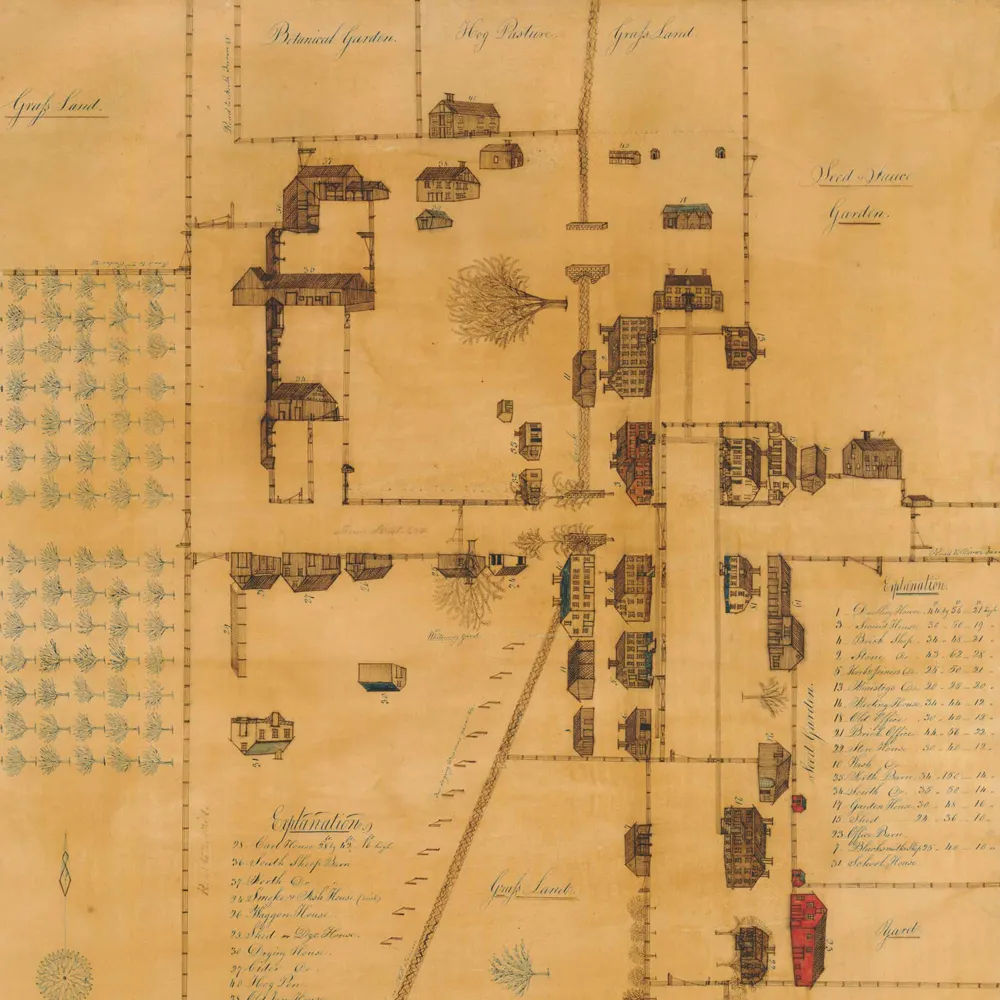
SHS offers a variety of programs and special events from March through late December. The site is also available as a venue for private and public events.
Visitors are welcome year-round, between dawn and dusk. We encourage guests to picnic, hike, and relax in the atmosphere of this special place.
The site is in the municipality of the Town of Colonie, with a mailing address of Albany, NY.
Significance
of Watervliet
The Shakers established a new settlement at a time of great spiritual renewal in America
The Shaker beliefs and worship attracted converts inspired by many religious revivals.
Many Protestants were seeking a new path to salvation. They began to visit Watervliet to meet Shaker leader Mother Ann and learn more about her teachings. These visitors included Joseph Meacham, a New Light Baptist minister, and Lucy Wright. They converted to the new religion and became important leaders.
In 1781, Watervliet was the base from which Mother Ann began a two-year journey to engage new converts and establish new settlements. By the time of her death in 1784, she had laid the groundwork for ten additional Shaker communities in the Northeast.
Father Joseph and Mother Lucy worked together in the 1790s to build a framework for the new religion. “Elders” and “Eldresses” reported to a Central Ministry based at the Mount Lebanon site.
While the Lead Ministry was established at Mt. Lebanon, Watervliet continued to play a prominent role in the network of communities
The Watervliet and Mt. Lebanon communities developed a new seed packing process. Watervliet Shakers also invented the flat broom. These two inventions grew into significant Shaker industries.
In 1837, a spiritual revival began at the South Family of Watervliet. From here, it spread to other Shaker communities. For twenty years, Shakers produced distinct works called spirit drawings, or gift drawings. During this period they also created thousands of poems and songs.
This revival became known as the Era of Manifestations.
One song, “Simple Gifts” was written in 1848 at the Alfred Maine community. It was later incorporated into Aaron Copeland’s Appalachian Spring symphony in 1944.
Each community took on a spiritual name during this period. Watervliet was named “Wisdoms Valley”. Shaker settlements also designated special spiritual "fountains" or sacred sites for outdoor worship. The Watervliet community identified more sacred sites than any other community.
Shakers at Niskayuna
The Shaker movement began in Manchester England with a breakaway group of Quakers
Led by James and Jane Wardley, this “Wardley Society” allowed women to participate in services. They also embraced an unusual, ecstatic style of worship. Observers called the new Christian sect “Shaking Quakers”, or simply “Shakers”.
Ann Lee had joined the Wardley Society in 1758. She experienced spiritual dreams and visions. Fellow Shakers began to call her “Mother Ann”, a leader of the congregation.
Under her influence, the Shakers embraced the practices of confession of sins, celibacy, and pacifism.
They called themselves the United Society of Believers in Christ’s Second Appearing, or “Believers”. They recognized the equality of all people.
The beliefs and worship of this congregation—singing and dancing on the Sabbath - were seen as a threat to the established Church and members were harassed, beaten, fined, and even jailed.
A small group of eight Shakers followed Mother Ann from Manchester, England to New York City. Their vision was to create an egalitarian, pacifist, “heaven-on-earth” in the New World. They arrived right before the American Revolution on August 6, 1774.
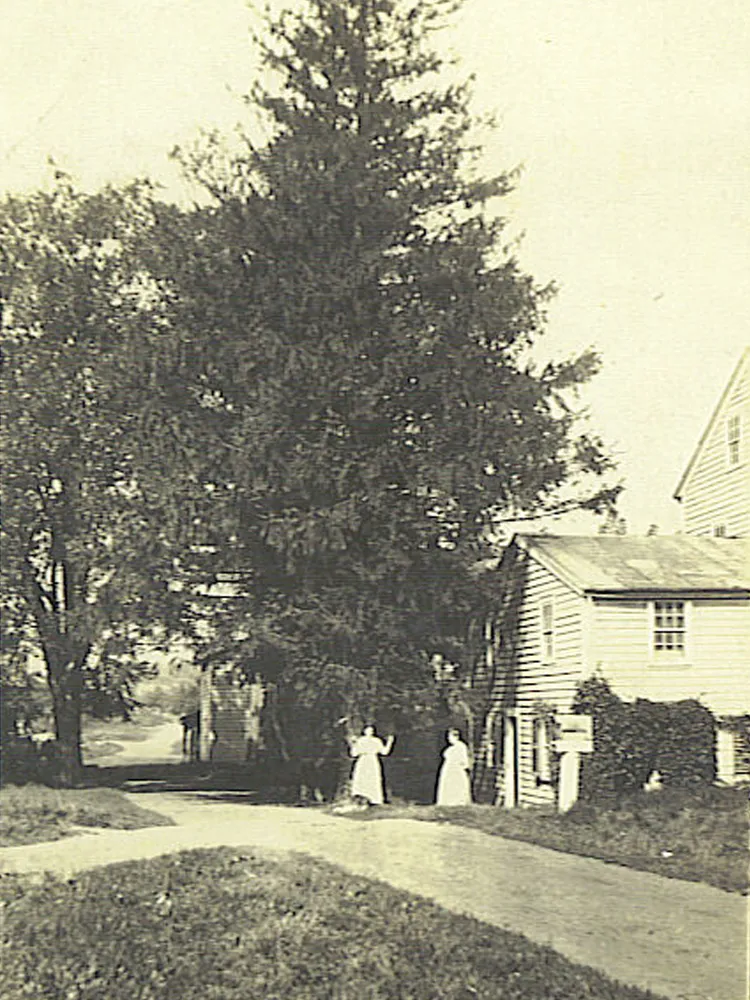
One of these Shakers was a wealthy farmer named John Hocknell. He sold his farm in Manchester and funded the voyage to the British Colonies. He arranged to lease a tract of forest in the Manor of Rensselaerwyck outside the City of Albany.
A total of twelve Shakers made their way north in 1776 to settle outside of Albany. Their original settlement was on land that is now the Albany International Airport. They moved a mile south to the present Church Family site in 1777. At that time, the area was called Niskayuna, a Dutch translation of a Native American name. Two years later, the area was renamed “Watervliet.”
Here, the group began the difficult task of turning the swamp and sandy dunes into farmland. Ann's brother William Lee worked as a blacksmith. Other members of the group found work as weavers and shoemakers in Albany. They lived together in a log cabin and endured several hard years. But, by 1780, the settlement prospered and hosted many visitors. Their guests sought to learn more about this new Christian sect.
Community
& Industry
The Shakers regarded their daily tasks as offerings to God
They valued cleanliness, honesty, tolerance, and hard work. Through these practices, they sought to create a “heaven on earth.”
The Shakers embraced new technologies that made work more efficient. Their communal housing and shared responsibilities created opportunities to hone technical innovations. They first developed their famous garden seed industry at Watervliet and Mt. Lebanon. Shaker seeds were of excellent quality, standardized sizing, and packaged in innovative paper envelopes.
Brethren and Sisters were always working to improve the design of tools and products. “Shaker” oval boxes are one iconic example.
The first commercial washing machine, a water-powered agitator, was invented at Mt. Lebanon in the 1850s. The flat broom and a new variety of strawberries were invented at Watervliet.
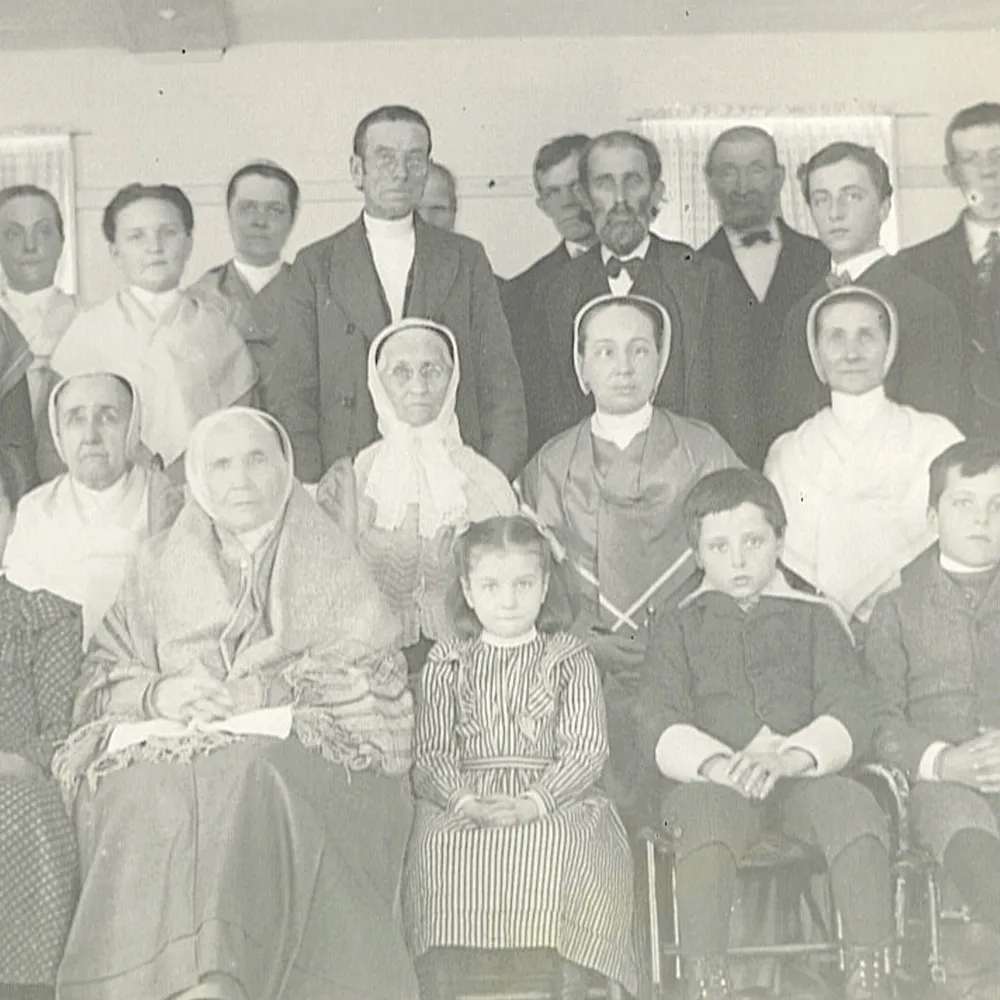
At first, the Shakers did not file patents. They believed that inventions should benefit the community at large.
This changed when they realized that others were filing applications for Shaker inventions.
With the blessing of the Elders, Brother George Price of Watervliet patented both a butter worker and a pea shelling machine.
During the 19th century, the Watervliet Shakers engaged in hundreds of business enterprises. They shipped a wide variety of goods to the east and midwest via railroads and the Erie Canal.
Efficient Communities
The Shakers were one of the most successful Utopian, communal societies in the US. As a pacifist, celibate, communal sect, members owned no personal, private property
Their leaders developed innovative planned communities that emphasized gender and racial equality.
Sisters shared authority with Brethren at each level of the hierarchy. This could include running various manufacturing processes to administering aspects of daily work.
As early as 1805, Black Shaker Brethren and Sisters lived in community at Watervliet. Journal entries show that the Watervliet Shakers also sheltered fugitive freedom-seekers.
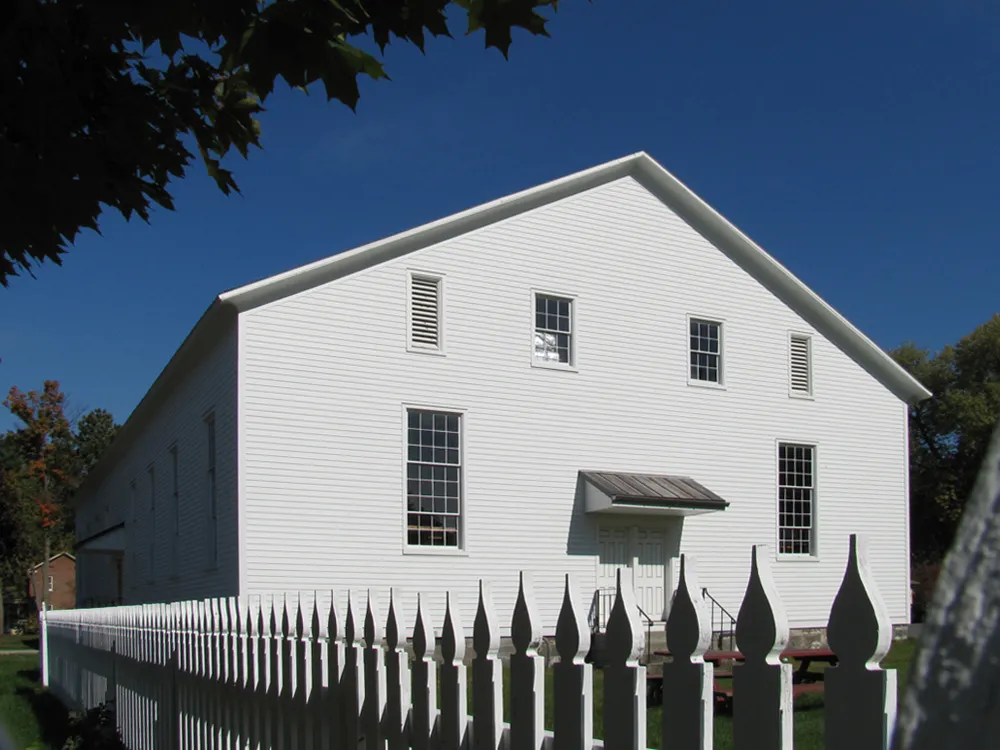
The Shakers often allowed visitors to observe Sunday services. This helped them win new converts and dispel harmful rumors. Politicians, authors, celebrities, and military leaders came to witness Shaker worship.
Occasionally, services were closed to visitors when they became disruptive. Some intruders to the site fired guns or made a commotion outside the Meeting House. The Shakers lost many buildings to arson over the decades.
Non-Shakers were often perplexed by the Shakers. Some saw this way of life as a threat to the "natural" family order.
Their unique lifestyle and values led to challenges and changes in New York State laws. Shakers were frequent plaintiffs in court cases. In particular, many about child custody, property ownership, and even divorce.
The Shakers grew famous for their unusual religious beliefs and neat, efficient communities. They served as a model for many other 19th century religious and social experiments. Religious and social leaders from Robert Owen to John Humphrey Noyes visited the Shakers.
Waning Years
The Shakers had a reputation as a compassionate and stable community
Entire families and families broken by death or illness came seeking refuge.
After the Civil War, changes in American society affected the Shaker communities. Religion became less important in the increasingly secular society. Shaker industries faced increased competition from factories expanding in urban areas. The rise of industry and growing cities also provided more jobs for both men and women. Fewer people were drawn to the largely agricultural Shaker way of life.
By the early 20th century, the first state-run orphanages were established. This decreased the number of children who were placed with the Shakers
The number of Shakers dwindled. Shaker communities struggled to maintain their extensive properties and buildings. Shaker communities began to close in the 1890s. Remaining members were often moved to other villages. At Watervliet, members of the Groveland community near Rochester joined the North Family. Members of the Enfield, Connecticut community joined the South Family.
The West Family was the first to close at Watervliet in 1916, followed by the North Family in 1919
Members of the West Family moved to the South Family. The 1922 death of Elder Josiah Baker prompted the closure and sale of the Church Family in 1925. The four remaining sisters chose to leave the Shaker community entirely.
The South Family alone remained until the death of Eldress Anna Case in 1938. The South Family sisters were moved to Mt. Lebanon and later to Hancock and Canterbury.
The Albany County
Albany County purchased the Church Family site in 1925
The property was used to build a new jail and a new almshouse and public health facility.
In 1928, the transformation of the former Church Family began. The Trustees Office became a Preventorium. This facility served those exposed, but not yet ill from Tuberculosis. The building was later used as a tuberculosis sanatorium. Plans were set in motion for the construction of the massive Ann Lee Home.
The County demolished twenty buildings on the site. The remaining structures were rehabilitated for use as part of the home complex
In time, the Meeting House became a Catholic chapel serving the Ann Lee Home community.
In 1928, the City of Albany constructed the first municipal airport in the nation. It was later transferred to Albany County, which still operates the airport today.
South Family journals note that the Shakers loaned tractors for the construction of the site. Sister Freida Sipple paid to go up on an early plane ride. A new nursing facility opened across Heritage Lane in the 1970s.
Colonie Town Historian, Jean Olton, led the effort to establish Shaker Heritage Society. Founded in 1977, SHS preserves and promotes the history of the Watervliet Shakers
Shaker Heritage arranged to lease some of the buildings from Albany County. The arrangement remains in place today. In 2020, Shaker Heritage signed a 50-year lease for the property. The agreement includes the nine remaining Church Family buildings and the orchard.
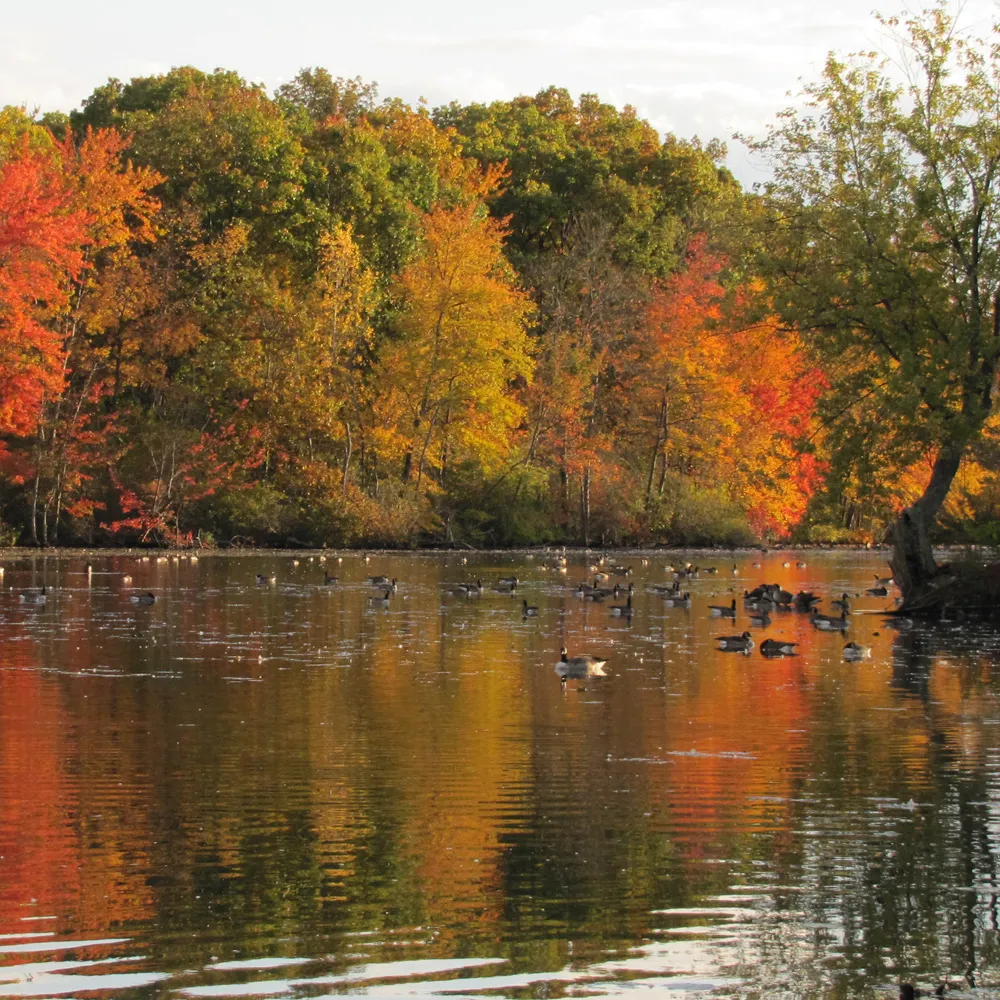
Today, the Church Family site retains much of its rural character and historic landscape.
The 1848 Meeting House is particularly significant. No other large-scale Shaker Meeting House retains original interior features. The area of historic significance also includes the Ann Lee Pond Nature Preserve.
Located next to Albany International Airport the site is a unique gateway to the Capital District.